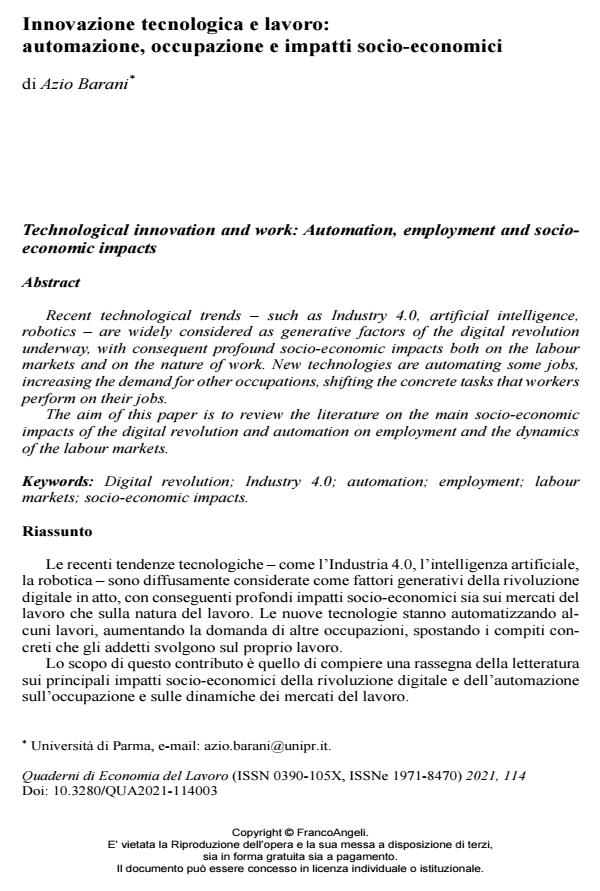Innovazione tecnologica e lavoro: automazione, occupazione e impatti socio-economici
Titolo Rivista QUADERNI DI ECONOMIA DEL LAVORO
Autori/Curatori Azio Barani
Anno di pubblicazione 2023 Fascicolo 2021/114
Lingua Italiano Numero pagine 29 P. 51-79 Dimensione file 275 KB
DOI 10.3280/QUA2021-114003
Il DOI è il codice a barre della proprietà intellettuale: per saperne di più
clicca qui
Qui sotto puoi vedere in anteprima la prima pagina di questo articolo.
Se questo articolo ti interessa, lo puoi acquistare (e scaricare in formato pdf) seguendo le facili indicazioni per acquistare il download credit. Acquista Download Credits per scaricare questo Articolo in formato PDF

FrancoAngeli è membro della Publishers International Linking Association, Inc (PILA)associazione indipendente e non profit per facilitare (attraverso i servizi tecnologici implementati da CrossRef.org) l’accesso degli studiosi ai contenuti digitali nelle pubblicazioni professionali e scientifiche
Le recenti tendenze tecnologiche - come l’Industria 4.0, l’intelligenza artificiale, la robotica - sono diffusamente considerate come fattori generativi della rivo-luzione digitale in atto, con conseguenti profondi impatti socio-economici sia sui mercati del lavoro che sulla natura del lavoro. Le nuove tecnologie stanno automatizzando alcuni lavori, aumentando la domanda di altre occupazioni, spostando i compiti concreti che gli addetti svolgono sul proprio lavoro. Lo scopo di questo contributo è quello di compiere una rassegna della letteratu-ra sui principali impatti socio-economici della rivoluzione digitale e dell’automazione sull’occupazione e sulle dinamiche dei mercati del lavoro.
Parole chiave:Rivoluzione digitale; Industria 4.0; automazione; occupazione; mercati del lavoro; impatti socio-economici.
Azio Barani, Innovazione tecnologica e lavoro: automazione, occupazione e impatti socio-economici in "QUADERNI DI ECONOMIA DEL LAVORO" 114/2021, pp 51-79, DOI: 10.3280/QUA2021-114003